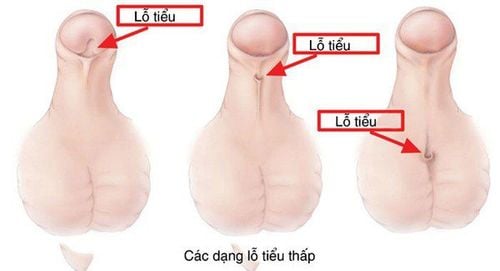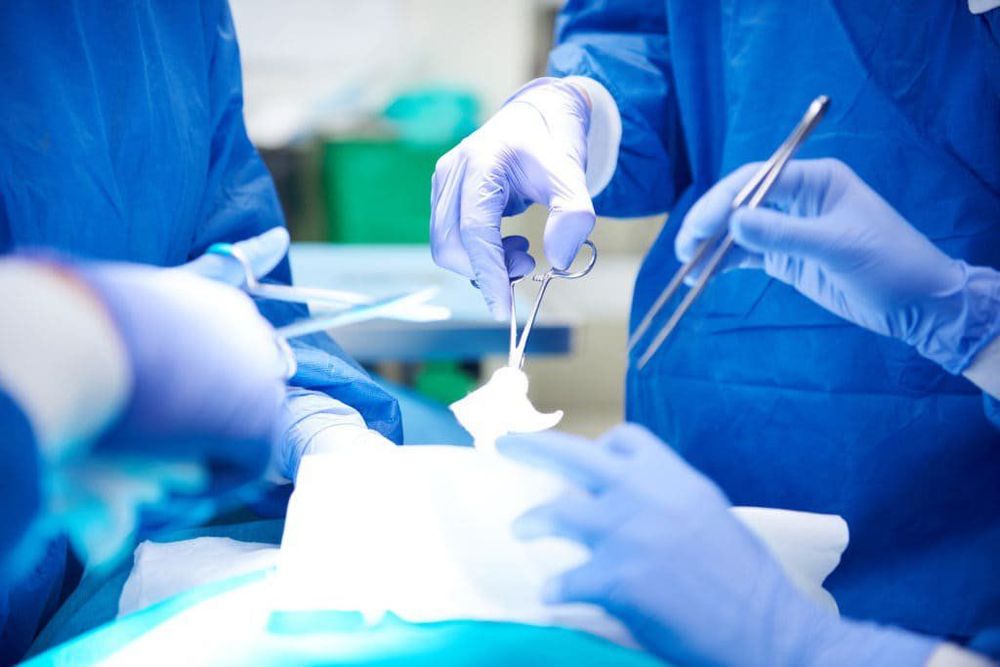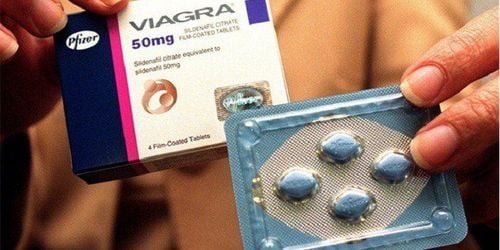This is an automatically translated article.
Low deviation is a birth defect in boys where the opening of the urethra is not at the tip of the penis but is displaced downwards. The treatment in most cases is low deviated urethral surgery, a single-stage reconstruction, which helps the child's urinary tract to re-structure as normal. The information below will help parents detect the disease early and quickly take the child to the doctor for appropriate intervention.
1. What is low urinary tract malformation?
The urethra is a small tube through which urine exits the bladder and out of the body through the urinary opening.Low urinary tract malformation is a birth defect in boys; in which the urethral opening is located on the underside of the penis instead of at the tip. The cause of this malformation is not clearly understood so far. Meanwhile, it is hypothesized that it is due to malfunctions in the action of certain hormones that stimulate the formation of the urethra and foreskin during penis development in male fetuses. However, many other factors may also play a role, given the following evidence:
Family history: This condition is more common in infants if a brother has had a septal defect short. Genetics: Certain gene variants can cause disruption of the hormones that stimulate the formation of male genitalia. Maternal age over 35: Some studies suggest that babies may be at increased risk of schizophrenia if the mother's age is over 35. Exposure to Certain Toxins During Pregnancy: There is some speculation about an association between low urinary tract defects and maternal exposure during pregnancy to certain hormones or chemicals such as pesticides. worms or industrial chemicals. Whatever the cause, low urinary tract malformation is not uncommon. Although this defect does not cause difficulties in taking care of children in the neonatal period, it can have a significant impact on the child's psycho-physiological life when growing up. Not only that, deformity of the penis can also negatively impact fertility when a man enters adulthood.
Therefore, the treatment of low urinary tract malformation is mainly surgical and should be carried out early, at least before school age. From there, the new child can urinate again as usual and the function of maintaining the breed later on is guaranteed.

Dị tật lỗ tiểu thấp xảy ra ở trẻ trai, có thể khả hưởng đến khả năng sinh sản khi người nam trưởng thành
2. Manifestations of low urinary tract malformation like?
In low urethral malformation, the opening of the urethra is located on the underside of the penis instead of at the tip. Sometimes the opening is located in the center or base of the penis and rarely the opening is in or below the scrotum.
Signs and symptoms of a low urinary tract malformation may include:
The opening of the urethra is observed at a location other than the tip of the penis The shaft of the penis has a downward curvature. covering the upper half of the penis Abnormal urine flow, the child must sit to urinate The penis is deformed during erection as the child enters puberty Poor ejaculation Male infertility
3. How to operate low urinary tract malformation?
The diagnosis of low urinary tract malformation is generally quite simple, the key issue is corrective interventions.
Some forms of low urinary tract malformation are very small and sometimes do not need surgery but simply a procedure. Meanwhile, with malformations of the urethral opening located too far from the head of the penis with severe deformity of the penis, surgery is necessary and is usually performed when the child is between the ages of 6 and 12 months. The child only needs to be taken as an outpatient and rarely spends the night in the hospital.
The day before surgery, your child will usually be asked not to drink or eat anything after midnight the night before surgery or at least 6 to 8 hours before surgery. If your child has to take medicine, consult a doctor and only take it with a small sip of water.
When surgery begins, your child will be under general anesthesia. The baby will sleep and this will make the child feel no pain during the surgery. If the defect is mild, surgery for low deviation urinary opening, single shaping will be performed in the same intervention. The surgeon will use a small piece of foreskin or tissue from another location to create a tube that increases the length of the urethra. It is the lengthening of the urethra that allows the urethral opening to open at the tip of the penis. Therefore, boys born and found to have a low urinary tract defect should not be circumcised after birth. It is the extra tissue of the foreskin that will be essential for future repair.
During surgery, the doctor will insert a catheter into the urethra to create a new shape. The catheter may be sewn or fastened to the tip of the penis, helping to keep it in place. One to two weeks after surgery, the catheter will be removed when the wound in the new stoma has also healed well.
In addition, right after surgery, the child's penis will be fixed by the doctor to the lower abdominal wall to limit movement. Children are encouraged to wear a dress instead of pants, a plastic cup placed on the penis to protect the area that has just had surgery. All of the sutures used during the surgery for low urinary tract malformations use self-dissolving sutures, so they do not have to be removed afterwards. Your child will also be encouraged to drink water so that he or she urinates frequently. Urinating will keep pressure from building up in the urethra, preventing it from narrowing later.

Khi dị tật lỗ tiểu đóng ở vị trí quá xa đầu dương vật và gây ra những biến chứng nguy hiểm thì, trẻ sẽ được chỉ định phẫu thuật
4. How to follow up after surgery for low urinary tract malformation?
Similar to other surgical procedures, low urinary tract surgery also has certain risks. Therefore, parents need to know how to monitor and detect children early, especially after being discharged home. Possible risks after this surgery include:
Leakage of urine Large blood clots in the urinary tract causing compression Scars narrowing of the urethra after plastic surgery The child may need to be hospitalized at this time. again to correct two for complex anomalies. In contrast, with simple abnormalities, such as strictures, children need long-term urethral dilatation. However, in general, the complication rate is quite low and most boys have a complete penis after surgery for a low urinary tract malformation. This organ ensures the child's normal urination and sexual activities when they reach adulthood.
To do this, parents need to take their child for follow-up visits with a urologist by appointment until the wound is completely healed. In rare cases, a urologist will be consulted once a child reaches puberty.
In summary, lower urinary tract malformation surgery is a type of surgery aimed at correcting abnormalities in the male urinary tract of boys. Although the cause is still undetermined, although this malformation has many different manifestations, the indication for plastic surgery needs to be planned early, helping to perfect the normal physiological functions of the penis. children, preventing sequelae on psychology as well as fertility later on.
References: ncbi.nlm.nih.gov; mayoclinic.org
MORE:
Why is there an ambiguous genitalia? Common diseases in children and treatment direction How does surgery for foreskin stenosis take place?













